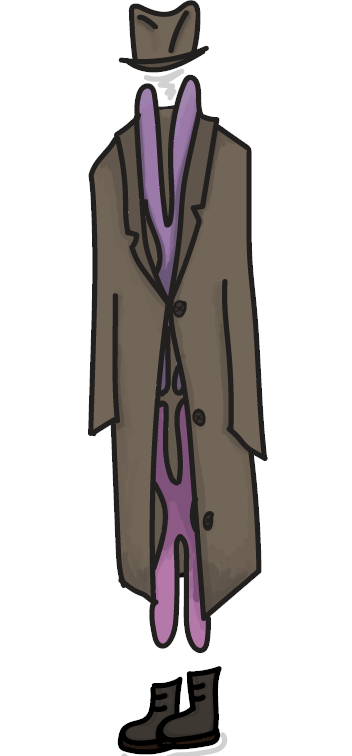
As promised, bugologist Julie Reynolds has blessed us with a guest post this week, the first in a four-part series on how our biology is more than just our genes. Or, as she so colorfully puts it, we are more than just a few chromosomes in a trench coat, no matter how charming an image that may be. I hope you enjoy this post as much as I did, and then come back next week for part two. -Andy
“So God created great sea creatures and every living thing that scurries and swarms in the water, and every sort of bird–each producing offspring of the same kind. And God saw that it was good.” Genesis 1:21 (NLT)
In the recent past, Andy shared interesting and valuable information about how genomes can evolve and become more complex with his “Quandary Den” simulations and the rest of his “Let’s Learn Evolutionary Biology Together” series. These are great discussions about Evolution and genome complexity, but understanding life as we know it requires additional conversations about complexity. Living bodies (plants, animals, fungi, and bacteria — oh my!) are more than chromosomes running around naked (viruses are, but that’s a whole different can of worms). And they are more complex even than multiple chromosomes in a trench coat. Rather each living thing is the result of complex interactions between its genotype (a.k.a. chromosomes or genome) and the environment working together to create a phenotype.
To put it simply, a phenotype is the collection of observable traits that define an individual. For plants, the phenotype includes leaf shape, flower size and color, seed shape, and the secondary chemicals they produce. Some characteristics that make up the phenotype of animals include skin and/or hair color, eye color, blood type, height, shoe size, and basal metabolic rate (how fast your body burns calories when you are sitting on the couch). The phenotype also includes the types of environments where an organism can live. Whales live in the water, but gorillas cannot survive in that environment. At the extreme end, the petroleum fly (a.k.a. Helaeomyia petrolei) thrives feeding off dead insects that get trapped in naturally occurring petroleum pools. These flies ingest the petroleum, which is highly toxic to other insects, to collect the arthropods that were trapped in it.1 In the plant world, a cactus’s phenotype allows it to live in extremely dry environments while alligator weed (Alternanthera philoxeroides) and water hyacinth (Eichhornia crassipes) only survive in water.
So, what creates a phenotype from a genome? This is something that scientists are very interested in understanding. Indeed, a key focus of my own research is discovering how insect phenotypes allow them to live almost anywhere on Earth. I study these things, not only because learning about living things is one way I worship God, but also because understanding why and how certain phenotypes come from a genome is important for caring for everything that makes up God’s Creation. In particular, understanding how a phenotype develops from a genome and how can be changed through interactions with the environment necessary for developing cancer treatments, developing new antibiotics, controlling insects that spread diseases, and understanding how living things will respond to the ever-changing climate.
Now that we have defined a phenotype and discussed why understanding how they develop is important, we are ready to take a deep dive into a discussion of some of the mechanics of developing a phenotype from a genome, including epigenetic processes that can make a phenotype plastic rather than set in concrete. We will also look at how phenotypic plasticity, or the ability to create multiple phenotypes from a single genome, can help populations of living things survive changes in the environment. Stay tuned for the next installment!
Dr. Julie A. Reynolds is a Research Scientist at The Ohio State University in the department of Evolution, Ecology, and Organismal Biology. She studies insect physiology and biochemistry with the goal of learning how animals adapt to extreme environments and survive changes in climate. In addition to writing for the Emerging Scholars Network, she is actively engages in discussions about science and faith as a Sinai and Synapses Fellow.

Leave a Reply